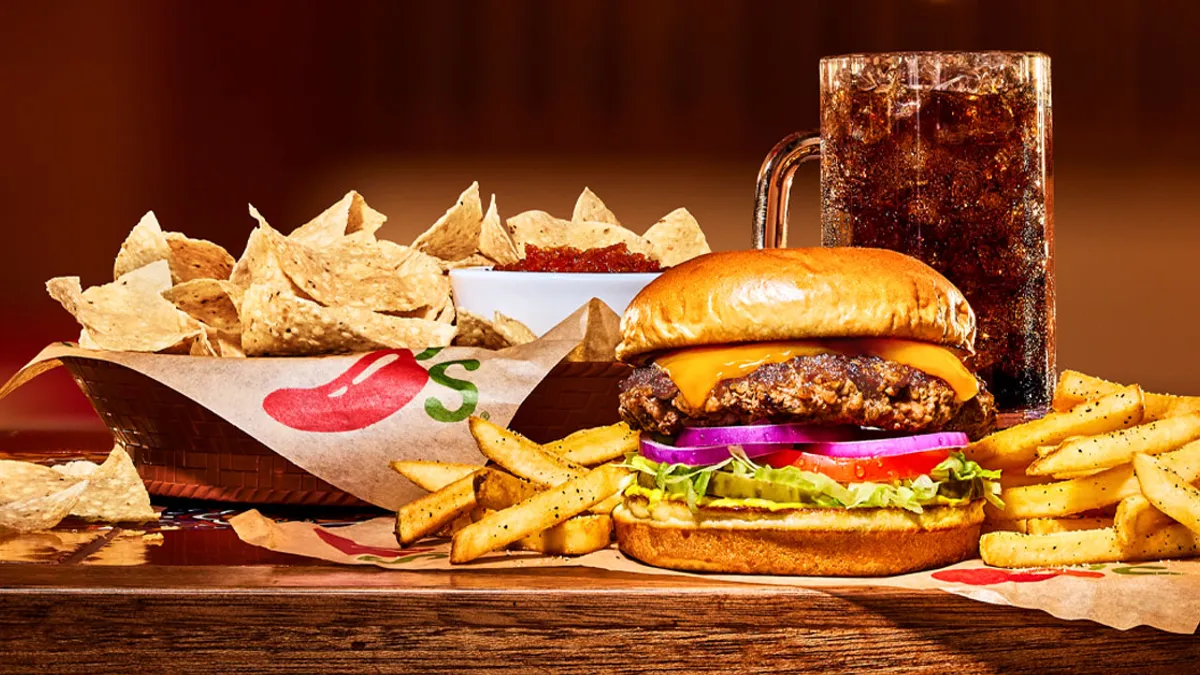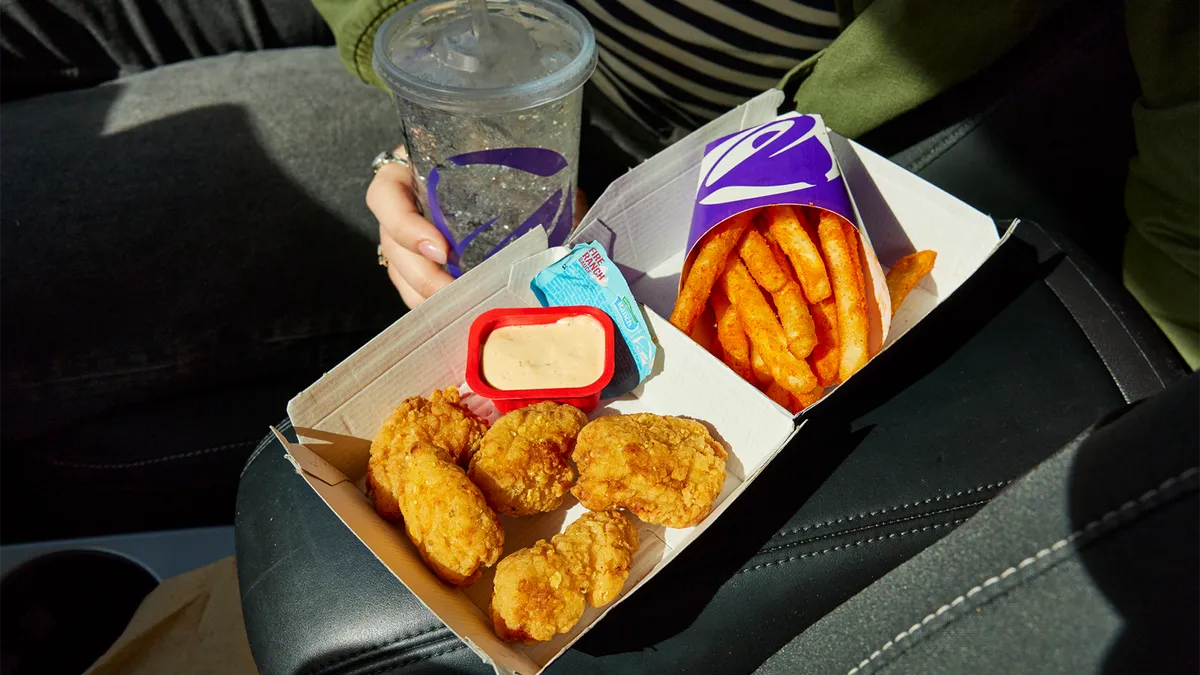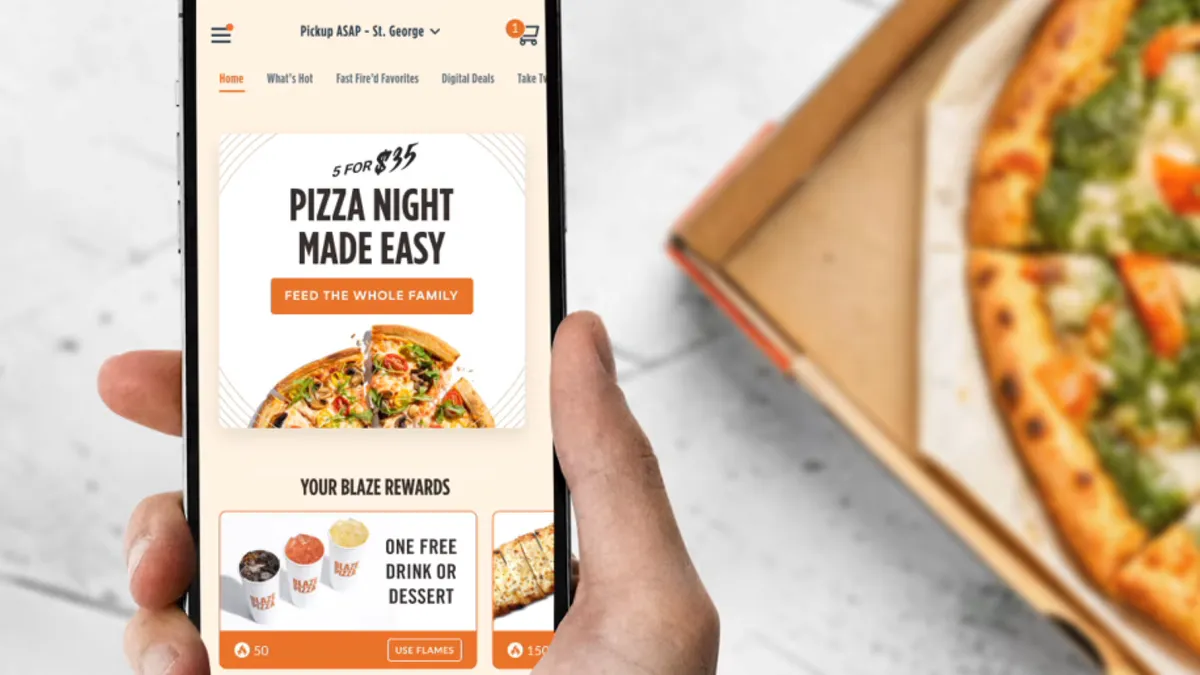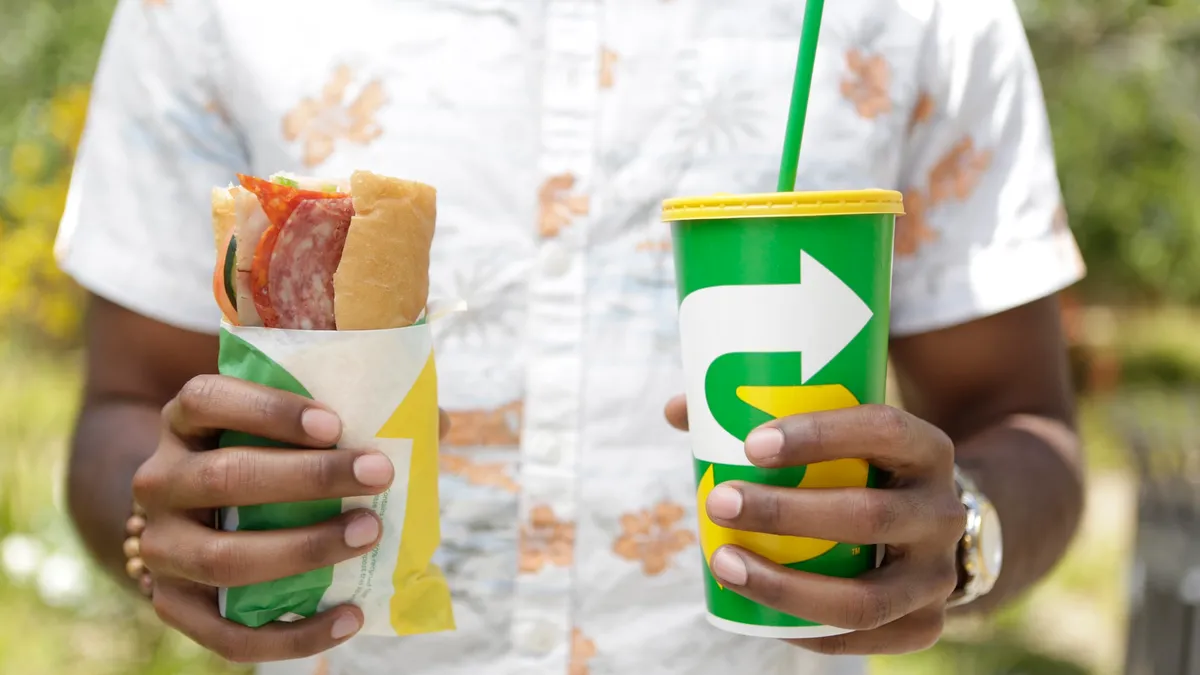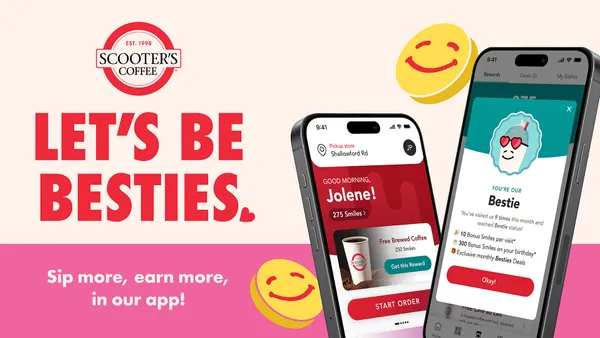The restaurant business has built a reputation for combative marketing, whether through making swipes on social media or leveraging technology to steal store traffic from rivals. Chili’s Grill & Bar is seeing success this year by putting brands outside of the casual dining category where it operates in the cross hairs. The purveyor of baby back ribs and margaritas has been busy chiding fast food giants over soaring prices, promoting offers like its 3 for Me meal and Big Smasher burger as more affordable options for cash-strapped consumers.
The aggressive messaging strategy, which has come to life in TV ads and a remake of cult ‘80s video game BurgerTime, seems to be paying off even as fast food companies again ramp up value initiatives. Chili’s saw same-store sales, a key metric of restaurant health, rise 14.8% year over year in its most recent financial quarter, according to an earnings statement from parent Brinker International. Positive results suggest that a turnaround plan for the brand is starting to take hold, with marketing helping drive growth.

“In terms of how we keep the momentum, it’s continuing to do the things that we’ve been focused on,” said Chili’s CMO George Felix, who joined the brand two years ago. “It comes down to continuing ownership and leadership in value.”
Chili’s has also invested more in marketing to Gen Z through apps like TikTok, capitalizing on fast-moving social media trends, including cheese-pull videos that can rack up hundreds of thousands of views. Felix, who has previously worked at QSR heavyweights like Yum Brands’ Pizza Hut and KFC, also discussed learning the ropes of first-party data and customer relationship management with Marketing Dive.
The following interview has been edited for clarity and brevity.
MARKETING DIVE: Brinker reported a healthy sales bump. It was a good earnings report in a category that is, in a lot of cases, not having many of those. As a CMO, how are you planning to capitalize on the momentum entering H2?
GEORGE FELIX: We’re really excited about the results. Obviously, it's a very difficult time right now in the industry. To be outpacing the industry by over 15 points in sales and six to seven points in traffic is something we’re really proud of.
Being able to continue to own that value conversation is very important for us. Part of that is making Chili’s relevant again. That’s something we’ve been focused on over the last couple of years. Some of that is via the 3 for Me deal but other times it’s maybe a new margarita or more of a reaction on social media or working with influencers to keep Chili’s top of mind.
The other piece that can’t be understated is our operational teams. We have 60,000 team members that are doing an amazing job. As we’re bringing people into Chili’s, they’re having a great experience. They’re experiencing what we call “Chilihead hospitality.” When you’ve got the marketing and operations working together like that, you’ve got a recipe for success.
Value has been a resonant strategy. Some of the fast food targets of your messaging have also begun to introduce more value meals. How has that affected your thinking?
It’s no secret that people are frustrated with the rising cost of fast food. Frankly, I think fast food has broken its promise to consumers on being the most affordable and convenient solution. For us, we think that was a great place to insert Chili’s into the conversation.
We’ve seen all of these [rival] offers coming out. A couple of things: One is, value is not just about the lowest price point. We’ve seen that play out when you see the [financial] results across the industry. I’m a firm believer that you get for what you pay. We feel confident in both the quality and the abundance of the offering that we have.
The other thing to note is that a lot of these things that are coming out, it seems like people are scrambling to put in a value offer for a limited time to stem the losses they’re seeing. The reality is, for us, our value is available every single day. There’s no coupon needed, no time restrictions. Another important aspect of this is we’re not trying to do anything that's gimmicky or short-term.
Just to affirm, you’re thinking about value as not so much a moment in time thing and more what Chili’s is about for the long haul?
Absolutely. We’ve been talking about the 3 for Me for about 18 months. More people have noticed in the last three or four months, but it’s not a new offer like some of these other concepts. We’re definitely in it for the long term.
For the marketing itself, how did you come up with the video game idea [for Big Smasher BurgerTime]? Why was a video game an important vehicle for this value message?
We’re on a mission to make Chili’s more relevant in culture. For us to do that, we’ve got to start reaching new audiences. We’ve spent a big part of the last year finding audiences that we think will really resonate with our brand. We dabbled in NASCAR, we sponsored a driver at the Daytona 500. We launched a new drink called the Espresso Martini that we make with tequila, and we partnered with “Vanderpump Rules” to reach that Bravo audience. Another audience we felt very passionate about is gamers. That was a group we had not really talked to in a meaningful way.
As we were thinking about ways to continue the conversation on the Big Smasher burger and the rising cost of fast food, one of our creative agencies, Jon Marshall & Daughters, came to us with this idea to bring back this nostalgic video game from the ‘80s called BurgerTime. It felt like a perfect fit for Chili’s. It’s a brand that people have a lot of nostalgia for. For us to take a game like that, but modernize it into today’s world and change the storyline to defeat the evil fast food syndicate, felt like a fun way to continue the narrative that we started back in May.
How do you balance starting the conversation with an upper-funnel play with driving people to sign up for Chili’s offerings?
We’re trying to drive sales overnight but also brand over time. You have to be doing both of those things at the same time. Something like BurgerTime we saw as a natural way to to keep Chili’s in the headlines once our media flight was done. It extends our message beyond traditional media. We try to balance that throughout the year. We’re not an advertiser that’s going to be on TV or digital platforms 52 weeks a year. We have to be smart about when we’re on air and then, when we’re not, doing other things that might be more PR- or social-led.
Nostalgia is a recurring theme. Chili’s brought back its Baby Back Ribs jingle last year. Is it a risk to get lost in nostalgia?
There’s a fine line you have to walk. I’ve worked on a few heritage brands. As a marketer at Chili’s, I feel fortunate to work on a brand that has a really rich history. We’re 49 years old, we’re coming up on our 50th birthday next spring. It’d be silly for me to ignore the history of this brand. The first thing we did, we called “digging through the attic.” So many people at this company have worked here for 20-, 30-plus years. We were able to really understand the history and DNA of what makes Chili’s special.
The danger of nostalgia is you just lean on what the brand used to be. Thankfully, our approach and the agencies [including Jon Marshall & Daughters and Mischief @ No Fixed Address] we surround ourselves with is to understand that history and where the brand started but modernize it for 2024 and make it relevant in today’s world.
That’s where the power comes: If you can take those elements of your brand that people love and are iconic and distinctive and make them relevant in today’s world. Our social media presence is maybe the best articulation of that. The tone of voice and spirit of our brand are brought to life on platforms like X and TikTok in ways that we couldn’t 49 years ago but it still feels very authentic.
You made some hires and agency appointments [including Gale] around CRM recently. What were you looking to improve in your capabilities?
We had a lot of work to do, honestly, to bring our CRM capabilities up to speed with where we need to be to be a modern marketer. I hired Steve Kelly, who’s a vice president on my team and is phenomenal in the space and is the leader who can help get us where we need to go.
First and foremost, we’re focused on data, like most brands. We’re getting our arms around our first-party data and understanding our guests to a better degree. We’re in the middle of that journey, I'd say. We’ve made some strides but we still have a ways to go until we’re at the point where we can really be able to message guests in a dynamic way based on what we know about them and their preferences at Chili’s. The goal is to get to a place where we can be smarter about the communications that we have through our own channels, email and SMS.
The loyalty space is interesting, especially when you think about casual dining where the frequency of visits is not the same as fast food or fast casual. We’re less focused on points-based systems and things of that nature. We’re more focused on how we can communicate and be more relevant to our guests.
You’ve worked at other restaurants. Has CRM always been in your toolkit? Is it something you’ve personally had to learn the ropes on?
I wouldn’t call myself an expert. I’m definitely learning and I think all CMOs are probably needing to do that. For me, fortunately, I’m able to surround myself with experts like Steve Kelly and with an agency partner like Gale that can accelerate where we are. In the restaurant space, the segment you're playing in really does matter. There is some nuance there that sometimes gets lost when you look at the restaurant category on the whole.
Is there anything you’re particularly excited about as a CMO? A new piece of technology, tactic or something cultural?
Every CMO needs to be very in tune with the consumer mindset right now. It’s been a tough go, to be honest, over the last six months or so. We’re just scratching the surface of what we can do with Chili’s. We’re at an interesting time, post-pandemic, where people are looking for places they can go out and connect with other people. Between the value that we offer and the experience that we offer, it’s a perfect intersection.



